Marisol is the play by a famous Puerto Rican playwright, Jose Rivera, created in 1992.
The peculiar feature of this play is that the author attempts to combine the characteristics of real life with people who have to perform their duties and the imaginary world with the angles that are invisible protectors of human souls and obliged to go for a world to save the universe (Ramirez, 2000).
There are many attributes which may perceive a better understanding of the play on stage, and the choice of proper lighting is one of such features.
Each scene of the play should have special lighting, and to succeed in the choice of light, the lighting director has to cooperate with the team and the technical director in particular.
My understanding of the play, as well as the message of the writer, makes me focus on the following images and ideas for lighting.
Each image has its function, its uniqueness, and purpose. The colors chosen in the images help to underline the emotions and personal attitude to the events described in the play.
Image One
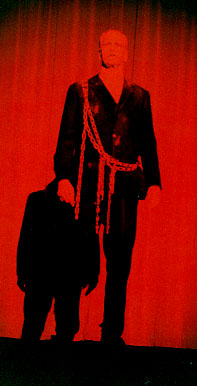
Each scene in the play is interesting in its way; still, one of the first most powerful impressions was the dialogue between Marisol and Man with Golf Club who admits the fact that “I am dead meat without my guarding angel! I’m gonna be food…” (Rivera, 1997, p.11).
I choose such lighting for Scene 1(Act One) to underline the importance of his words and make the viewers focus their attention on that moment using bright colors.
Red and black lighting may be appropriate in this scene to explain that absence of angel is not good, and people are under threat to die as both red and black colors may signify human death, despair, and hopelessness.
Using such lighting, the role of one particular person may be underlined and described as the turning point in the story.
Image Two
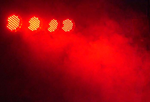
The colors and the method of lighting used in this picture are also appropriate for some scenes in the play, and one of them is when the Angel talks about her plans to protect the universe, her desire to kill the King of Heaven, and the necessity to leave Marisol.
I choose such type of lighting for Scene 3 (Act One) to evaluate the tension and passion of the Angel and her attitude to Marisol. It is not enough to choose the bright color, but it is necessary to describe the true meaning of her words.
The worlds have to undergo certain changes; angels should gather their powers to resist the power of evil. It seems to be a captivating idea to use the red light at 45 degrees to left.
My choice is based on the fact that evil and necessity to start war has one feature: people, as well as angels, have the space to retreat still they do not accept the reality as it is, this is why it is necessary to resist the light and become more confident in personal readiness.
Image Three
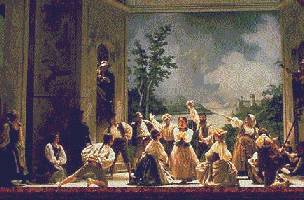
In spite of the fact that the play is full of bright dialogues and fast decisions, there are some scenes which are inherent to ordinary human life.
For example, the situation when Marisol enters the office and observe June’s reaction on her return may be considered at the beginning of Scene 5 (Act One). Calm lighting, simple intensity, and even a kind of diming may be used.
I choose such colors to demonstrate how ordinary people may behave and under which conditions have to exits. There are no special controversies or brightness. People do not have to demonstrate their emotions, and Marisol enters the room as she does it daily.
And the reaction of June seems to be normal because June believed the press and thought her colleague and friend was killed last night. In this case, banality is not a disadvantage but other evidence of human demands, interests, and styles of life.
This is why the choice of such lighting should be judged too much but accepted as possible to add something human to the story about angels, demons, murders, and unbelievable hope.
Image Four
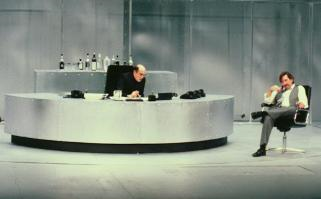
This kind of lighting is associated with the conversation that took place between Marisol and Lenny, June’s brother in Scene 9 (Act One). The main theme of their conversation is the deal that is based on some crazy conditions.
On the one hand, everything is rather simple: two people talk to each other to achieve some kind of agreement. On the other hand, it is a kind of fight that happens between the representatives of evil and good sides.
I choose such lighting because I think it is necessary to provide the public with a chance to observe all aspects of the situation but be ready to define good and bad sides, this is why it is necessary to provide some light on both participants and create the background that does not prevent the development of the conversation.
The choice of black and white colors is rather clear: a person is free to make a choice and consider the personal opinion, and the choice made in the play should be all about god or evil side of the life where angels could not show the right way and explain the essence of the activities taken.
Image Five
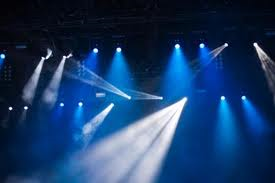
As a result of the fight and decision-making processes, the main characters managed to survive and achieve their main goal to be together. “We survived,” cried Marisol (Rivera, 1997, p.55). It is hard to explain what emotions she has.
This is why I choose such lighting to underline that some kind of uncertainty is present as she does not know whether she is the only one who survived or there are some other people who managed to survive.
White lighting on the black and blue background is moving under 45 degrees and stops as soon as the character understands that they are at the graveyard. Black and blue colors symbolize the nature of the fight that used to participate.
Though the war with evil is over and the characters spill the light over their lives, they are not ready to recreate the world and find their angels. This is why much work has to be done soon, and characters should be prepared for it.
In general, each picture is a personal understanding of the play written by Rivera. Among the variety of color and angles available for appropriate lighting, it is not always easy to make the right choice.
Still, imagination and awareness of the play help to define the main aspects of the work and create a masterpiece relying on personal ideas, interests, and knowledge.
Reference List
Ramirez, E. C. (2000). Chicanas/Latinas in American theatre: A history of performance. Bloomington, IN: Indiana University Press.
Rivera, J. (1997). Marisol and other plays. New York: Theatre Communications Group.